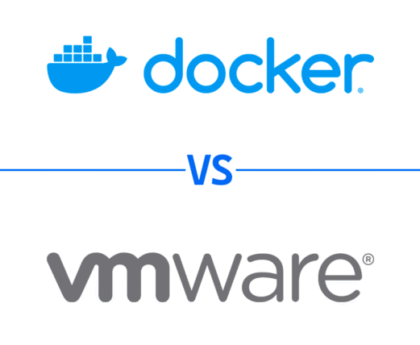Artificial intelligence (AI) is no longer just a futuristic concept—it is actively reshaping industries, consumer experiences, and the way businesses operate. AI-powered products are at the forefront of this transformation, offering innovative solutions that improve efficiency, personalization, and decision-making. From smart home devices to advanced analytics tools, AI-powered products are revolutionizing both everyday life and enterprise operations.
This article explores what AI-powered products are, their key applications, benefits, challenges, and the trends driving their adoption across different sectors.
1. What Are AI-Powered Products?
1.1 Defining AI-Powered Products
AI-powered products are devices, applications, or services that leverage artificial intelligence technologies to perform tasks traditionally requiring human intelligence. These products use machine learning, natural language processing, computer vision, and predictive analytics to enhance functionality, automate processes, and provide actionable insights.
Examples of AI-powered products include:
- Smart assistants like Amazon Alexa and Google Assistant
- AI-driven recommendation engines on platforms like Netflix or Spotify
- Predictive analytics software for businesses
- Autonomous vehicles and drones
By integrating AI into products, companies can offer smarter, more adaptive experiences to users.
1.2 The Core Technologies Behind AI-Powered Products
AI-powered products rely on a combination of advanced technologies, including:
- Machine Learning (ML): Enables products to learn from data and improve performance over time.
- Natural Language Processing (NLP): Powers voice assistants and chatbots to understand and respond to human language.
- Computer Vision: Allows products to recognize images, videos, and objects, enabling applications like facial recognition and augmented reality.
- Predictive Analytics: Helps businesses forecast trends, demand, and customer behavior for better decision-making.
2. Applications of AI-Powered Products
2.1 Consumer Technology
AI-powered products are transforming daily life for consumers:
- Smart Home Devices: Thermostats, lighting systems, and security cameras that adapt to user behavior for convenience and energy efficiency.
- Personal Assistants: AI virtual assistants that schedule appointments, answer questions, and provide real-time recommendations.
- Entertainment Platforms: Personalized content recommendations on streaming services like Netflix, YouTube, and Spotify.
2.2 Healthcare and Medicine
AI-powered products are making healthcare more precise and efficient:
- Diagnostic Tools: AI systems analyze medical images to detect diseases like cancer earlier and with higher accuracy.
- Virtual Health Assistants: Chatbots and AI apps provide medical advice, monitor symptoms, and remind patients about medications.
- Predictive Analytics: Hospitals use AI-powered products to predict patient readmissions and optimize resource allocation.
2.3 Business and Enterprise Solutions
Companies are leveraging AI-powered products to drive productivity:
- CRM Systems: AI enhances customer relationship management by predicting customer needs and automating follow-ups.
- Supply Chain Optimization: AI-powered analytics forecast demand, reduce waste, and optimize inventory.
- Fraud Detection: Financial institutions use AI to detect fraudulent transactions in real time.
2.4 Automotive Industry

AI-powered products are revolutionizing mobility:
- Autonomous Vehicles: Self-driving cars use AI to navigate roads safely and efficiently.
- Driver Assistance Systems: AI monitors driver behavior and provides warnings or takes corrective action when necessary.
- Predictive Maintenance: Vehicles use AI to predict mechanical failures before they occur, reducing downtime and costs.
2.5 Education
AI-powered products are reshaping the learning experience:
- Personalized Learning Platforms: AI tailors content to individual student performance and learning styles.
- Automated Grading Systems: AI reduces grading workload and provides real-time feedback.
- Virtual Tutors: AI-powered chatbots assist students outside the classroom with homework and study guidance.
3. Benefits of AI-Powered Products
3.1 Enhanced Efficiency
AI-powered products automate repetitive tasks, allowing humans to focus on strategic and creative work. This boosts productivity across industries.
3.2 Improved Personalization
By analyzing user data, AI-powered products provide personalized experiences, from shopping recommendations to healthcare plans, increasing customer satisfaction.
3.3 Better Decision-Making
AI-powered analytics provide actionable insights from complex datasets, enabling businesses to make informed decisions quickly and accurately.
3.4 Cost Savings
Automation, predictive maintenance, and optimized processes reduce operational costs, making AI-powered products a smart investment for businesses.
3.5 Innovation and Competitive Advantage
Companies adopting AI-powered products can innovate faster, deliver better customer experiences, and stay ahead in competitive markets.
4. Challenges in Adopting AI-Powered Products
4.1 Data Privacy Concerns
AI-powered products often require access to large amounts of personal and business data, raising concerns about privacy, security, and compliance with regulations.
4.2 High Implementation Costs
Developing, integrating, and maintaining AI-powered products can be expensive, particularly for small and medium-sized enterprises.
4.3 Bias and Ethical Issues
AI systems may inherit biases from training data, leading to unfair or discriminatory outcomes in decision-making processes.
4.4 Dependence on Quality Data
AI-powered products are only as good as the data they are trained on. Poor data quality can result in inaccurate predictions and suboptimal performance.
4.5 Skill Gap
Implementing AI solutions requires expertise in AI, data science, and machine learning, which may be lacking in many organizations.
5. Examples of Popular AI-Powered Products
5.1 Smart Assistants
Products like Amazon Alexa, Google Assistant, and Apple Siri are widely used AI-powered products that manage schedules, answer queries, and control smart devices.
5.2 Recommendation Engines
Netflix, YouTube, and Amazon use AI-powered recommendation engines to suggest content or products based on user behavior.
5.3 Autonomous Vehicles
Tesla’s autopilot and Waymo’s self-driving cars are AI-powered products redefining mobility with advanced navigation and safety systems.
5.4 AI in Finance
Tools like Kabbage and Upstart leverage AI-powered products for credit scoring, fraud detection, and automated financial services.
5.5 AI-Powered Health Apps
Apps like Babylon Health and Ada use AI to provide medical advice, symptom checking, and predictive health insights.
6. The Future of AI-Powered Products
6.1 Smarter AI Systems
Future AI-powered products will become more autonomous, capable of understanding complex human behaviors, and providing more accurate predictions.
6.2 Integration Across Industries
AI-powered products will become standard across industries, from agriculture and logistics to education and retail, streamlining operations and enhancing efficiency.
6.3 Ethical and Responsible AI
As AI adoption grows, there will be increased emphasis on developing responsible AI-powered products that prioritize transparency, fairness, and data privacy.
6.4 AI-Powered Products in Everyday Life
We can expect AI-powered products to become more integrated into daily routines—automated personal assistants, smart appliances, and predictive personal healthcare tools will redefine convenience and productivity.
7. How Businesses Can Leverage AI-Powered Products
7.1 Identify Opportunities
Businesses should identify processes that can benefit from automation, prediction, or personalization through AI-powered products.
7.2 Invest in Data Infrastructure
High-quality data is crucial. Investing in data collection, storage, and cleaning is essential for effective AI-powered products.
7.3 Focus on User Experience
AI-powered products should enhance user experiences rather than complicate them. Seamless integration and intuitive interfaces are key to adoption.
7.4 Continuous Monitoring and Improvement
AI models evolve over time. Regular monitoring, retraining, and updates are necessary to ensure AI-powered products continue to perform optimally.
Conclusion
AI-powered products are transforming the way we live, work, and interact with technology. From smart assistants in our homes to predictive analytics in businesses, these products offer unprecedented efficiency, personalization, and insights. While challenges like data privacy, ethical concerns, and high implementation costs exist, the benefits far outweigh the drawbacks.
As AI technologies continue to advance, AI-powered products will become even more sophisticated, accessible, and essential. They are not just tools—they are catalysts for innovation, driving progress across industries and reshaping our future in profound ways.
Whether you are a consumer enjoying a personalized recommendation, a business leveraging AI for decision-making, or a healthcare provider using predictive analytics, AI-powered products are already changing the world—and this is just the beginning.





